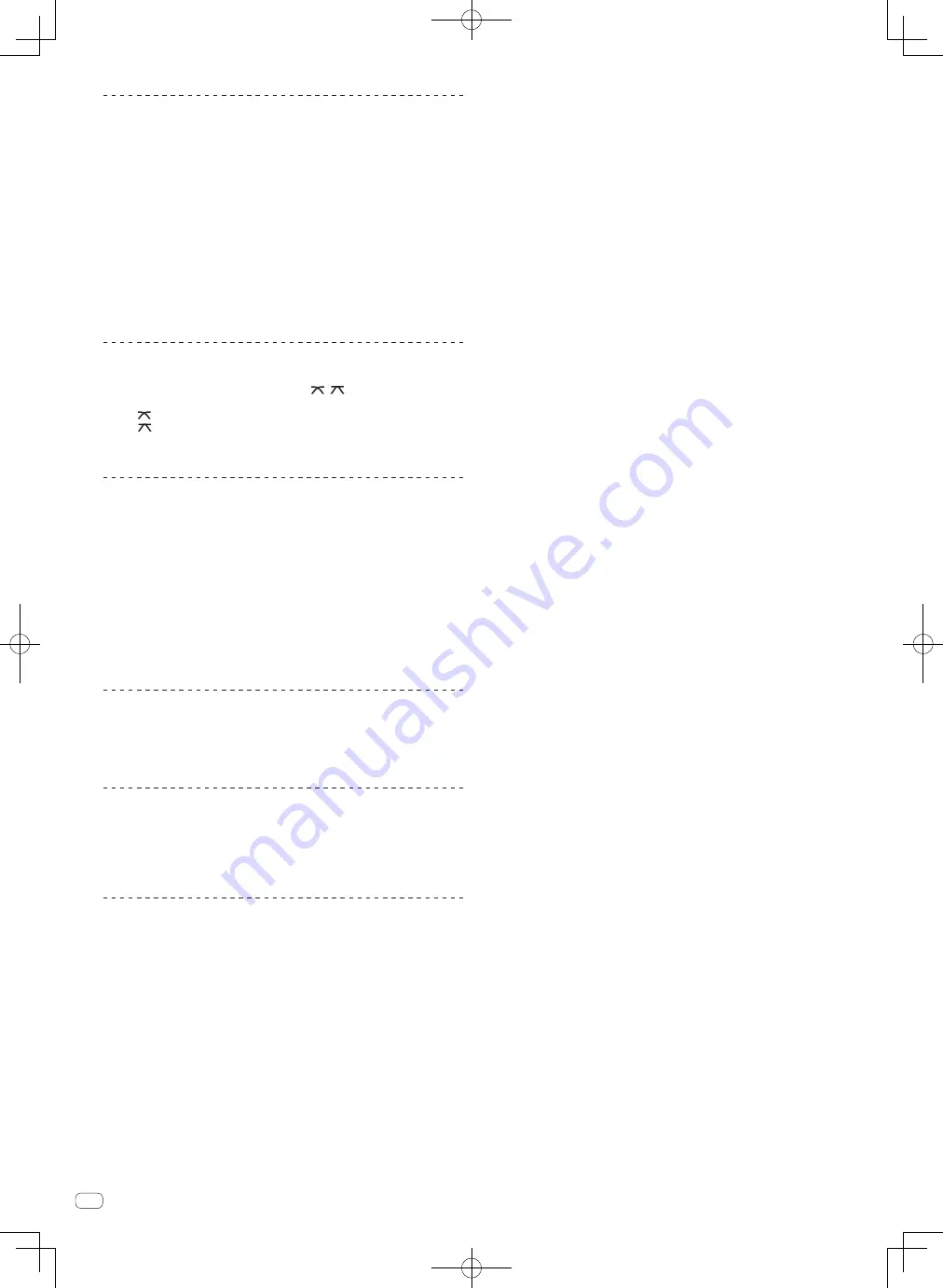
18
En
Monitoring sound with headphones
1 Connect headphones to the [PHONES] terminal.
2 Press the [CUE (TAP)] button for the channel you want to
monitor.
3 Turn the [HEADPHONES MIXING] control.
Adjusts the monitor volume balance between the sound of the channel whose [
CUE
(
TAP
)] button is pressed and the [
MASTER
] channel sound.
!
To monitor only the sound of the [
MASTER
] channel, turn the
[
HEADPHONES MIXING
] control clockwise from the center position.
4 Turn the [HEADPHONES LEVEL] control.
The sound of the channel whose [
CUE
(
TAP
)] button is pressed and the sound of the
[
MASTER
] channel are mixed and output from the headphones.
!
Monitoring is canceled when the [
CUE
(
TAP
)] button is pressed again.
Select the crossfader curve characteristics
Switch the [CROSS F. CURVE (THRU, , )] selector switch.
—
[
THRU
]: Choose this when you do not want to use the crossfader.
—
[
]: Set here for a curve that rises gradually.
—
[
]: Sets an abruptly rising curve. (When the crossfader is moved away
from the edge on the [
CH 1
] side, the sound of the [
CH 2
] side is output
immediately.)
Adjusting the crossfader’s operating load
The load (resistance) when the crossfader is operated can be adjusted using a
flathead screwdriver.
!
The crossfader’s attenuation curve and the play at the two edges of the fader (the
cut lag) can be adjusted. For details, see
Changing this unit’s settings
on page 27.
1 Move the crossfader to the right ([CH 2]) edge.
2 Insert the flathead screwdriver into the [FEELING ADJ.]
adjustment hole and turn it.
—
Turn clockwise: The load decreases (the resistance of fader movement gets
weaker).
—
Turn counterclockwise: The load increases (the resistance of fader move-
ment gets stronger).
Using the fader reverse function
The crossfader’s operating direction can be reversed by turning the
[
CROSS F. REVERSE
] switch on.
Set the [CROSS F. REVERSE] switch to [ON].
Audio is output from the [
BOOTH
] terminal
Turn the [BOOTH MONITOR] control.
Adjusts the level of audio signals output from the [
BOOTH
] terminal.
!
The unit can also be set so that the sound of the microphone is not output from
the [
BOOTH
] terminal. For details, see
Changing this unit’s settings
on page 27.
Using the TAP function
The BPM value shown on the TRAKTOR tempo display can be set using the TAP
function.
1 Load the track in the deck.
For details, see
Loading tracks to decks
on page 14.
2 Play the track.
For details, see
Playback
on page 15.
3 In beat with the track’s tempo, press the [CUE (TAP)] button
four times while pressing the [SHIFT] button.
The average interval at which the [
CUE
(
TAP
)] button was pressed is set as the BPM
value.
!
This operation does not change the track’s tempo (playing speed).
Содержание DJM-T1
Страница 33: ...33 En English ...
Страница 65: ...33 Es Español ...
Страница 77: ...13 Zhtw 中文 有關範圍畫面的詳細資訊 請另外參閱 TRAKTOR 2 Application Reference 中的 12 Setting Up TRAKTOR Scratch ...
















































